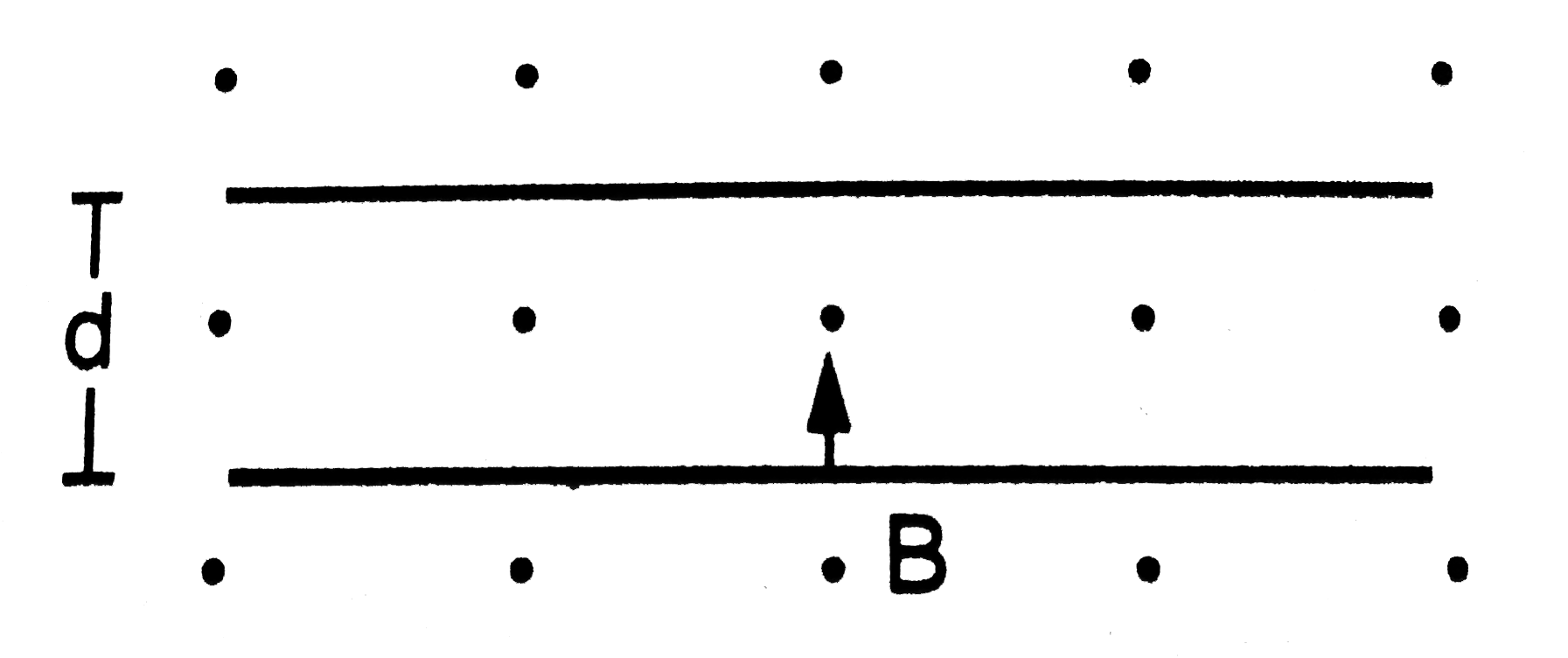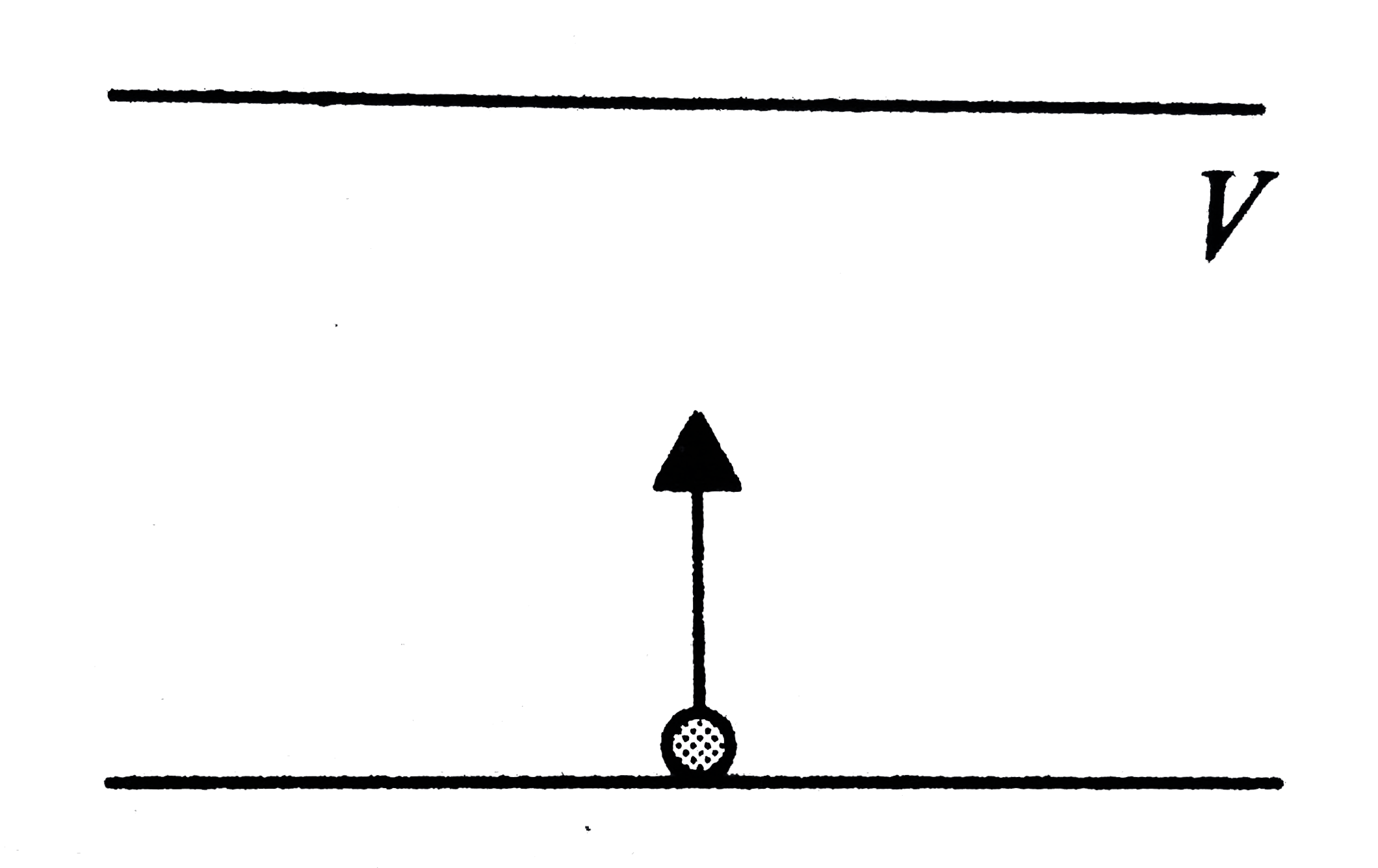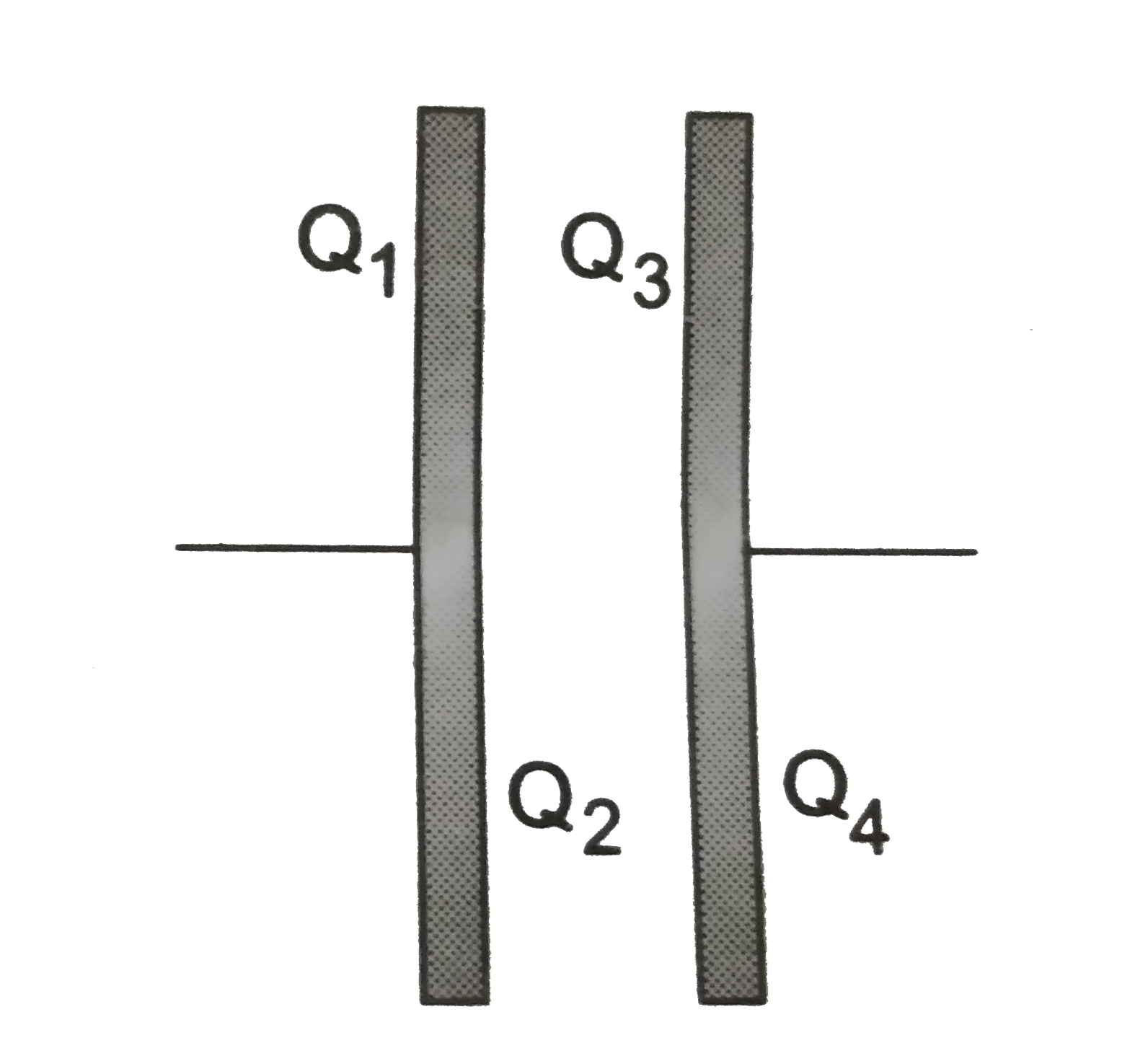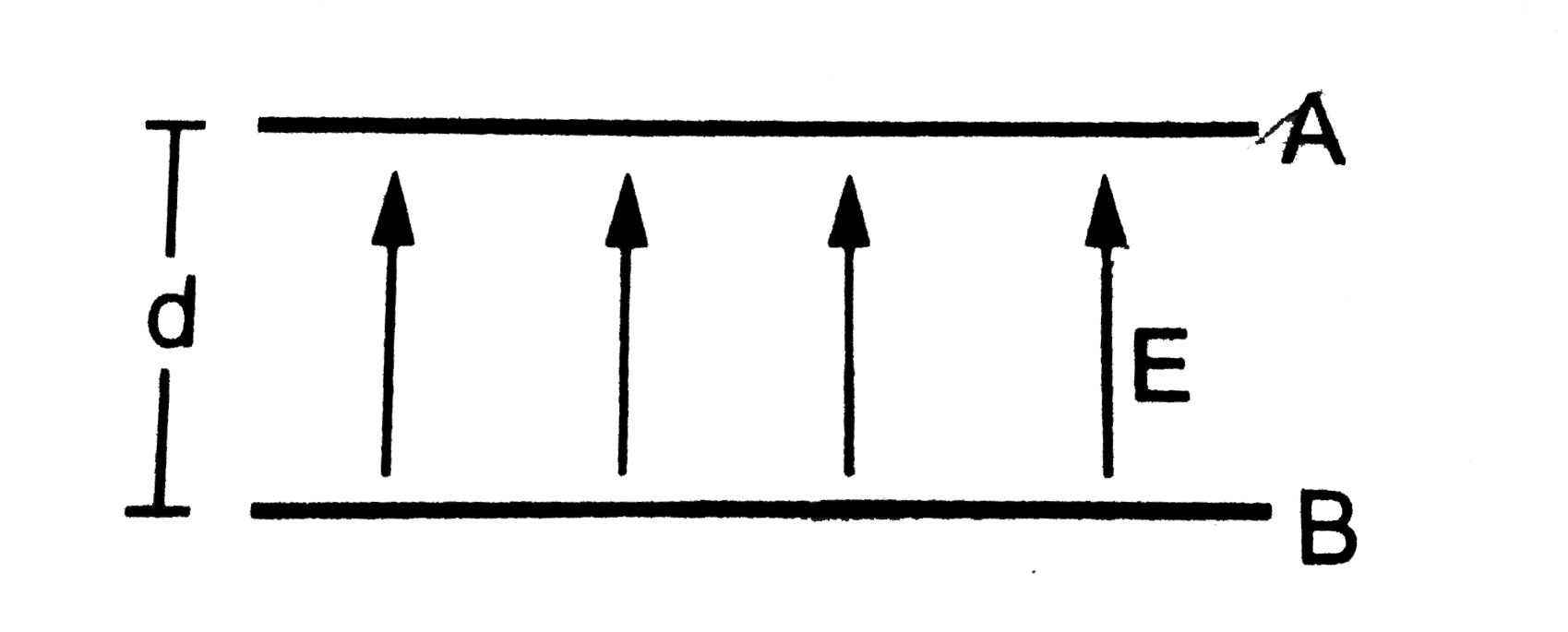An electron is emitted with negligible speed from the negative plate of a parallel plate capacitor charged to a potential difference V. The separation between the plates is d and a magnetic field B exists in the space as shown in figure 34-E20. Show that the electron will fail to strike the upper plate if
The force experienced first is due to the electric field due to the capacitorE = V/d F = eEa = eE/me [Where e→ charge of electron me → mass of electron]Now The electron will fail to strike the upper plate only when d is greater than radius of the are thus formed.
Related Solutions
An electron is emitted with negligible speed from th nagative plate of a parallel plate capacitor charged ot a potential difference V. The separtion between the plates is d and a magnetic field B exists in the space as shown in . Show that the electron will fail to strike the upper plate if ltdgt .
 View Solution
View SolutionAn electron is emitted with negligible speed from th nagative plate of a parallel plate capacitor charged ot a potential difference V. The separtion between the plates is d and a magnetic field B exists in the space as shown in . Show that the electron will fail to strike the upper plate if ltdgt .
 View Solution
View SolutionAn electron is emitted with negligible speed from the nagative plate of a parallel plate capacitor charged ot a potential difference V. The separtion between the plates is d and a magnetic field B exists in the space as shown in . Show that the electron will fail to strike the upper plate if ltdgt .
 View Solution
View SolutionA parallel plate capacitor having plate area A and separation between the plates d is charged to potential V .The energy stored in capacitor is ....???
View SolutionElectrons are observed to be ejected in various directions with negligible speed from the negative plate of a parallel plate capacitor when the plate is illuminated by a certain wavelength. The plates are separated by a distance d and a potential difference V is maintained between them. Show that none of these electrons will reach the positive plate if a magnetic field is applied at right angles to the electric field and that the magnetic induction has a value where m and e are the electron mass and charge respectively.
View SolutionAn electron enters the region between the plates of a parallel plate capacitor at an angle to the plates. The plate width is , the plate separation is . The electron follows the path shown just missing the upper plate. Neglect gravity. Then,
 View Solution
View SolutionAn electron enters the region between the plates of a parallel plate capacitor at an angle theta to the plates. The plate width is l , the plate separation is d . The electron follows the path shown just missing the upper plate. Neglect gravity. Then,
View SolutionAn electron having charge and mass starts from the lower plate of two metallic plates separated by a distance . If the potential difference between the plates is , the time taken by the electron to reach the upper plate is given by
 .View Solution
.View SolutionAn electron having charge e and mass m starts from the lower plate of two metallic plates separated by a distance d . If the potential difference between the plates is V , the time taken by the electron to reach the upper plate is given by .
View SolutionParallel plate capacitor #!#Capacitance of parallel plate capacitor #!#Electric field between parallel plate capacitor #!#Potential difference between parallel plate capacitor
View SolutionThe force between the plates of a parallel plate capacitor of capacitance C and distance of separation of the plates d with a potential difference V between the plates, is.
View SolutionThe force between the plates of a parallel plate capacitor of capacitance C and distance of separation of the plates d with a potential difference V between the plates, is.
View SolutionA parallel plate air capacitor has capacity 'C' distance of separation between plates is 'd' and potential difference 'V' is applied between the plates force of attraction between the plates of the parallel plate air capacitor is :
View SolutionA parallel plate air capacitor has capacity 'C' distance of separation between plates is ‘d’ and potential difference 'V' is applied between the plates. Force of attraction between the plates of the parallel plate air capacitor is
View SolutionFigure shows a parallel plate capacitor with its plate area A=lb and plate separation d at left end of the plates. Upper plate of capacitor is slightly tilted by a very small angle 8 as shown. Find the capacitance of this capacitor.
View Solutionकिसी आवेशित (charged ) समांतर पट्टिका संधारित्र की चार प्लेटो पर आवेश का वितरण चित्र में प्रदर्शित है। यदि संधारित्र की धारिता (capacitance ) C हो, तो प्लेटो के बीच विभवांतर होगा
 View Solution
View Solutionshows two metallic plates A and B placed
. parallel to each other at a separaton d. A uniform
. electric field E exists between the plates in the direction
. from plate B to plate A. Find the potential difference
. between the plates.
 View Solution
View SolutionA potential difference of 600V is applied across the plates of a parallel plate capacitor. The separation between the plates is 3mm. An electron is projected vertically, parallel to the plates, with a velociyt of 2 xx 10^(6)m//s moves undeflected between the plates. The magnitude and direction of magnetic field in the region between the capacitor plates is
View SolutionFigure shows a parallel plate capacitor with plate area A and plate separation d . A potential difference is being applied between the plates. The battery is then disconnected and a dielectric slab of dieletric constant K is placed in between the plates of the capacitor as shown. The electric field in the gaps between the plates and the electric slab will be
View Solution
